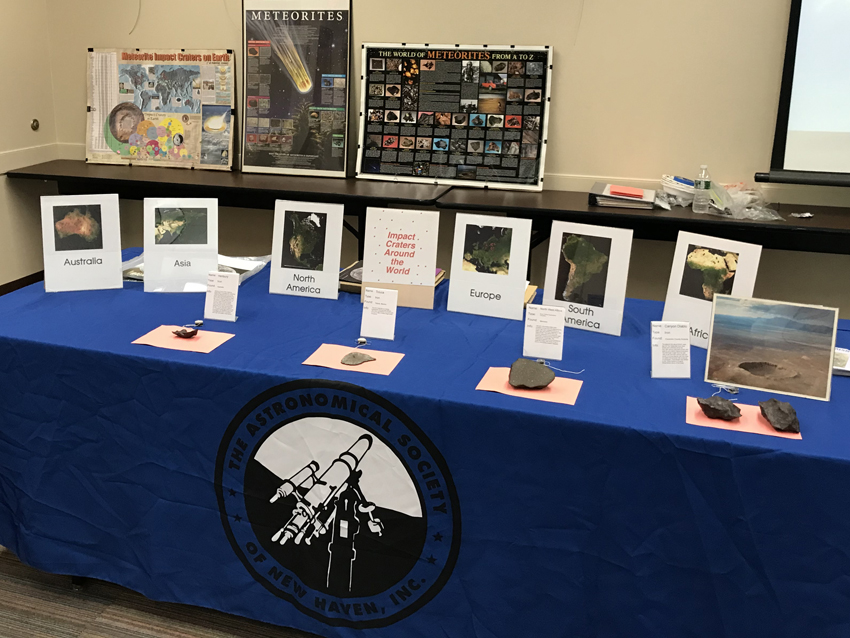Club Meteorites at the Berlin-Peck Memorial Library
By Al Washburn
On Tuesday, July 31, 2023 I brought the club’s meteorite collection to the Berlin, CT library for a 2 o’clock presentation. It started with a laser pointer demonstration and an explanation of a few basic terms. Next was the meteor drop box, which was experienced by many enthusiastic youngsters. A Powerpoint on meteorites, their types and qualities followed. The session concluded with a hands-on investigation of the samples with a magnet to identify the iron from the non-iron samples. The session lasted an hour.

Observing Reports
By Michael Amato
On the evening of July 4, I decided to browse around Cygnus and Cepheus with my 5.1″ rich field Newtonian telescope. After viewing several open clusters, I decided to compare the blue color of Deneb and the red color of nearby star Mu Cephei. I moved my scope back and fourth between both stars and the different colors of these stars was something to see. The more I compared both stars, the blue Deneb and red Mu Cephei really contrasted each other. This was my best comparison between a blue and red star I have ever seen. Finally, when I returned back to Mu Cephei, I noticed for the first time a ring of fainter stars all around Mu Cephei. I had never noticed this before and I have to admit I stared at this sight for quite a while. This proves the old astronomy adage, “The more you look, the more you see.”
On Monday morning July 31, during the predawn hours I woke up to use the bathroom and before I went back to bed, I went outside on my deck to see what was going on in the sky. The sky was surprisingly clear, so I went to get my 5.1″ short tube rich field Newtonian telescope. The first thing I pointed to was M45, the Pleiades. Everyone loves looking at M45 in binoculars but when you look at the Pleiades with a rich field scope, you can still see the entire cluster, except it is larger and you can see many more stars in your field of view. When I used my Barlow, I was able to see many more stars deeper into the cluster. Also, the nebulosity around the brightest stars was very easy to see. I next went on to the Hyades. I scanned the whole cluster which is also a great binocular object but is more exciting to see in a rich field scope. I saw the Yield Sign Asterism among other groupings of stars within the cluster. Aldebaran looked very reddish and I think it, along with Betelgeuse, may die in some of our lifetimes. Finally, I turned my scope high over my head to take a peek at Jupiter and its moons. Only two moons were out this time, but it was a nice view anyway. I will be planning more early risings for the sky in the future.
On Friday, August 18 at about 6:00 am, my condo area was hit by either a small tornado or what is called a gustnado. As I was watching the approach of a thunderstorm, the trees off my deck started to violently sway in a twisting way as a rain-wrapped whirlwind passed by. I believe it was a gustnado which forms during a downdraft in front of a thunderstorm. As the downdraft precedes the storm, sometimes a gustnado will also spin up. The gustnado then crushed a canopy by our condo pool where the pool attendants are stationed. Nobody was under the canopy when this happened. It was an exciting start to my day.
